Western University of Health Sciences January 2024
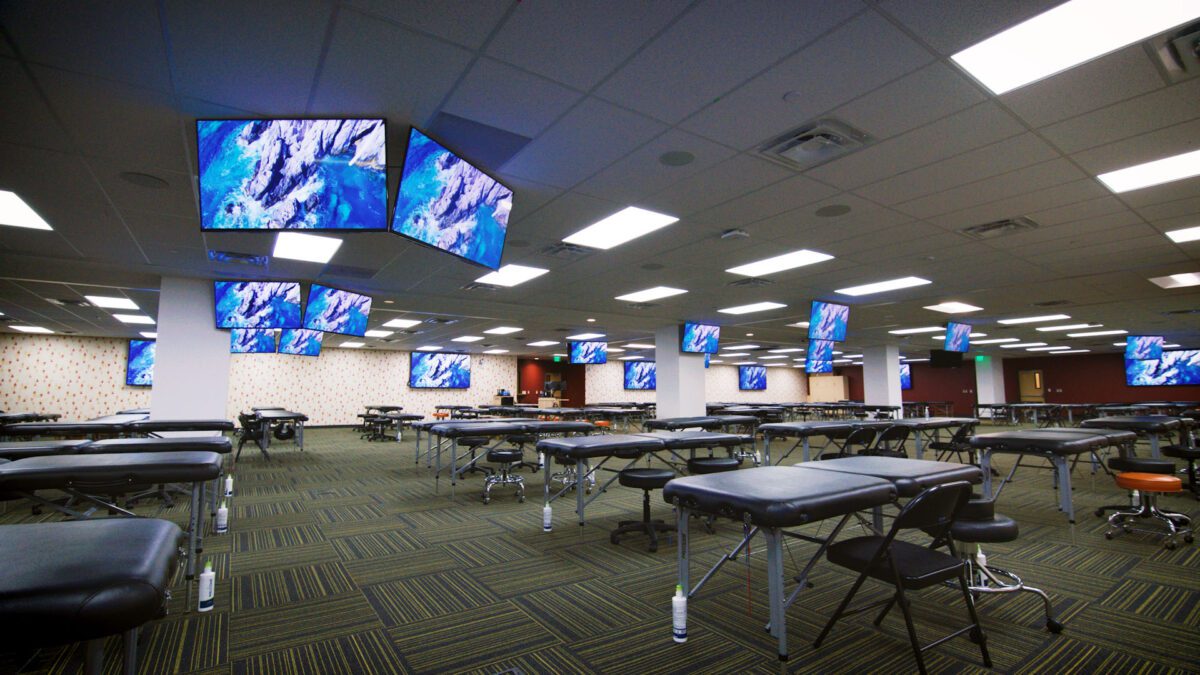
Case Study
Western University of Health Sciences
Advancing the Healing Arts with AV Technology
Education in osteopathic medicine demands hands-on learning. But how do you teach touch-dependent techniques to up to 300 students simultaneously?
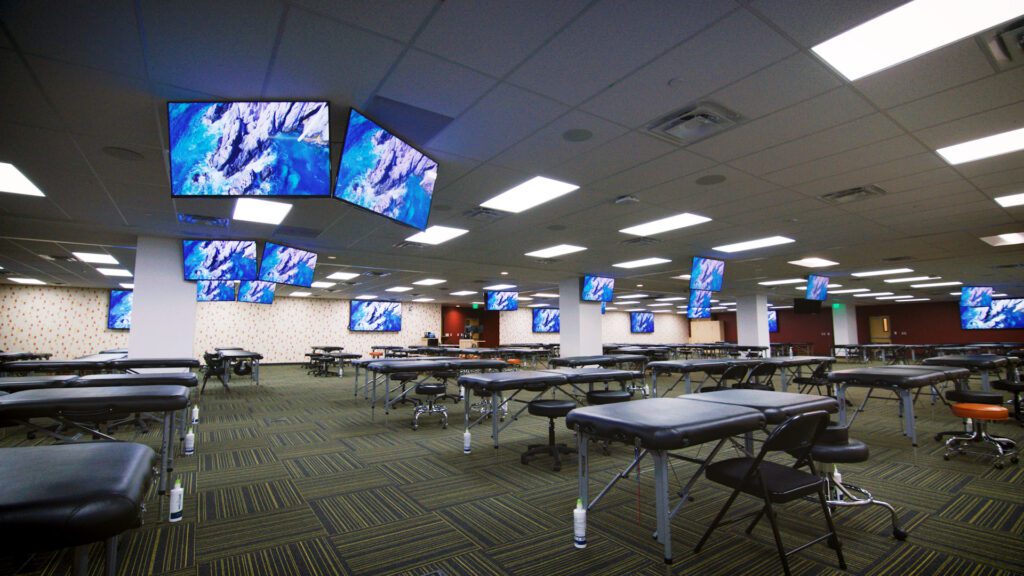
Western University of Health Sciences engaged ClearTech to integrate a new learning environment where every student – everywhere in the room – gets up close and personal with the curriculum. And despite an unyielding academic calendar and unprecedented supply chain challenges caused by the pandemic, we delivered our solution without causing any classroom downtime.
Situation
The need for a hands-on partner.
Combining one-to-one instruction with the latest learning technologies, Pamona, California-based WesternU ranks among America’s most comprehensive graduate schools for the health professions. To stay on the cutting edge in a highly competitive market, the health sciences university – which also has a campus in Lebanon, Oregon – committed to creating a state-of-the-art instructional space where up to 300 students on-premises, plus distance learners, could learn the art of “meaningful touch” simultaneously.
“Our curriculum has a large component of hands-on training,” says audiovisual technology manager Michael Bradford. “That’s the heart of manipulative medicine, but the standard classroom environment with desks facing a podium only works for those in the very front of the room. What about all the students behind them – and all the other students learning remotely?”
Advances in collaboration technology helped WesternU answer that challenge. Incorporating mobile and PTZ cameras, strategically placed monitors, microphones, and speakers with powerful signal distribution technology, the latest AV solutions could give every student a front-row seat.
Challenge
How to maintain business continuity amid a pandemic?
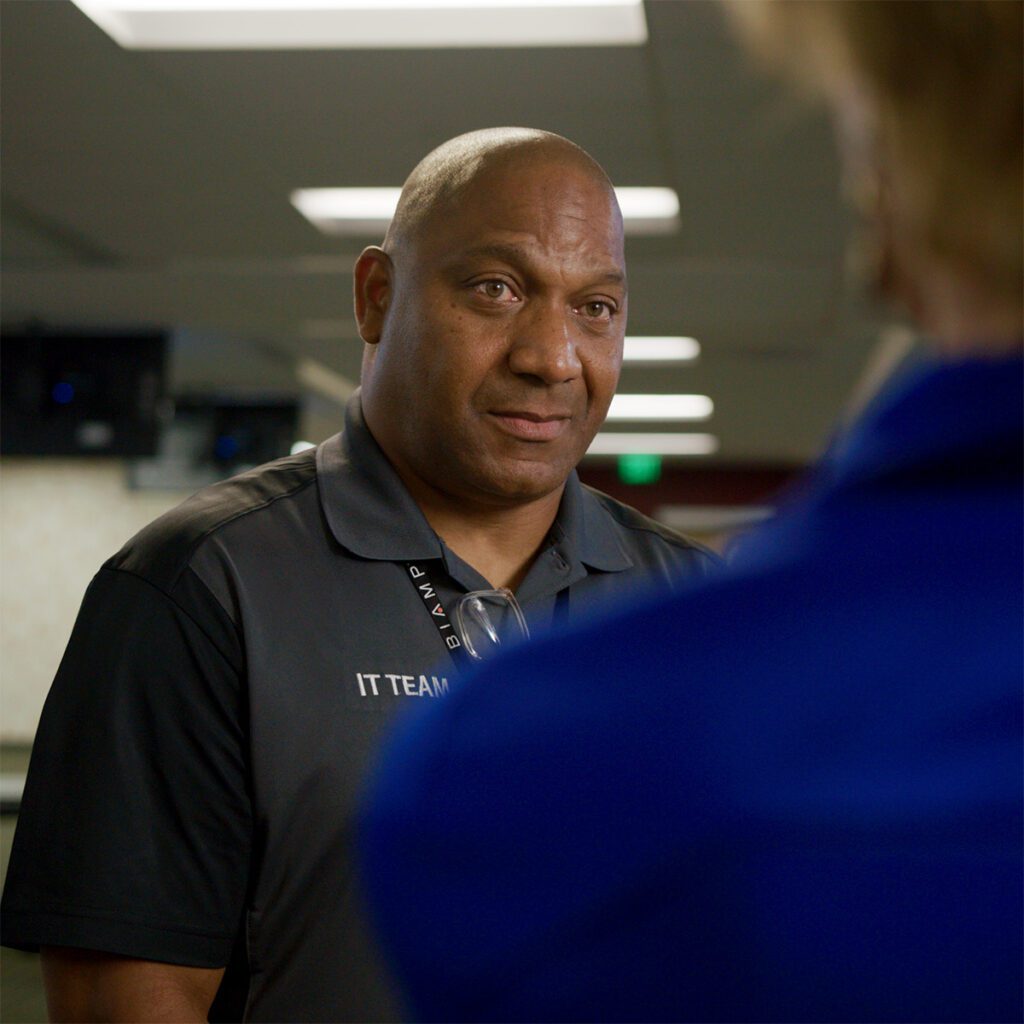
Working in close collaboration, Michael Bradford and vice dean of college affairs Dr. Ed Barnes developed a conceptual plan for the new space – an endeavor that would involve consolidating four different learning spaces into one. “The biggest barrier to success was the size of the room,” which had a number of weight-bearing posts that could block sightlines, explains Bradford. An additional obstacle involved where to conduct classes during construction of the new facility. This was addressed by renting a hanger-like offsite space and outfitting it as a temporary classroom facility.
Yet no sooner did Barnes and Bradford get the go-ahead from university administrators than an even bigger challenge arose: the COVID pandemic – and all its attendant headaches, including staffing shortages, the need for social distancing, and supply chain disruptions that would turn out to be unprecedented in scope and duration.
The ClearTech team had their work cut out for them – because in addition to the space-related technical challenges and pandemic-related logistical issues, there was also the matter of how to create an entirely new learning space in a manner that allowed classes to continue without interruption.
Solution
A singular experience for 300+ students.
ClearTech worked first with WesternU to set up a temporary classroom environment in a hanger-like off-site space large enough for students to learn while socially distanced. Meanwhile, back on campus, ClearTech partnered with Michael Bradford and team to restructure an environment comprising four different learning spaces into a single permanent facility with two halves, each capable of accommodating up to 150 students.
“To achieve a hands-on learning experience – not just for the 300 students in the room but also for distance learners – the most important thing was viewability,” explains Bradford. “It’s essential for students to see the smallest details and intricacies that are involved in medical treatment.”
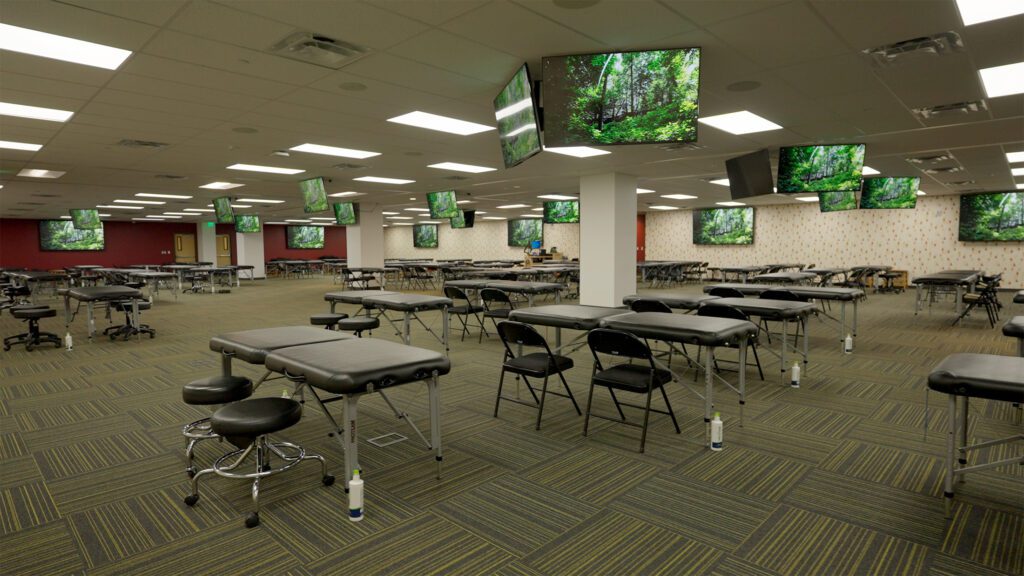
ClearTech went to work developing a technical engineering schematic for an AV system that would meet the needs of all student populations while also enabling a natural teaching experience for faculty. Each half of the room included approximately 40 monitors arrayed so that the facility’s structural columns no longer impaired viewing. ClearTech also installed an array of fixed PTZ cameras, including a primary presenter camera, an overhead camera and an audience-facing camera.
In addition to the fixed cameras, ClearTech enabled a network of iPads and GoPro cameras – including a custom-modified flex-cam connected to a 15-foot tether – that enabled instructors to rove about the room. This solution required robustly powerful signal distribution, and ClearTech worked with the contractors from the outset to ensure the infrastructure accommodated the power and conduit requirements specified by ClearTech. Due to supply chain issues, distribution coders and decoders were in short supply, so surplus older equipment was used – with plenty of babysitting – until a Crestron system was installed at a later date.
“ClearTech worked with us to deal with every obstacle that came up. At one point, we went back to the drawing board and came up with a whole new engineering schematic in response to concerns about processor loads,” explains Bradford. “It was sometimes stressful, but we achieved a great outcome in part because of careful planning. We knew from the beginning that we wanted a strong hybrid component to the solution. Moreover, we had even planned for business continuity in the event of a major disruption like a pandemic – having secured a 3,000-participant Zoom license years earlier should we ever need to make a dramatic shift to distance learning.”
Result
Zero classroom downtime. Yep, zero.
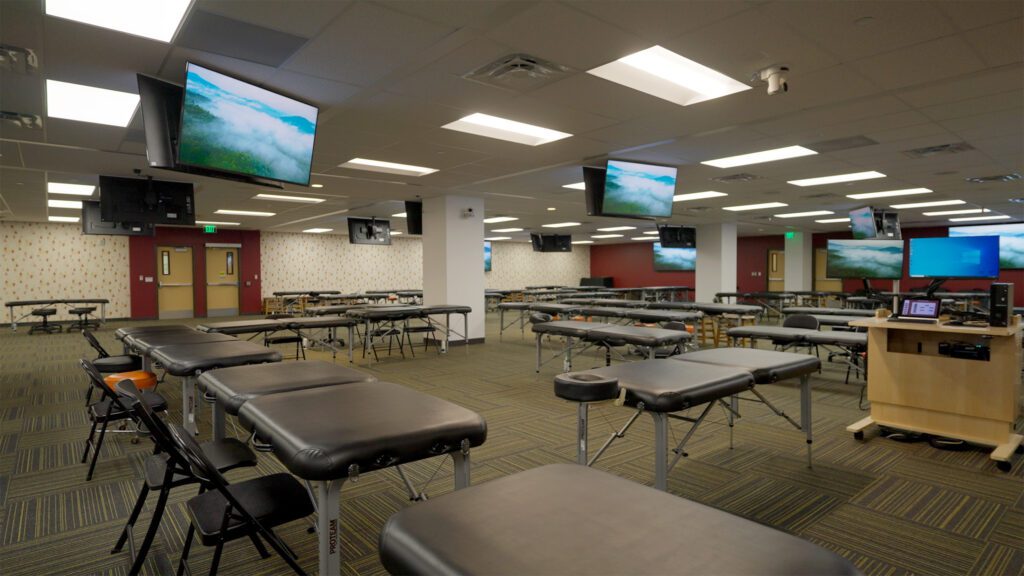
For the WesternU team, one measure of success counted above all others: “Zero classroom downtime,” says Bradford. “If there’s even a five-minute delay, that’s a failure. Classes have to start on time. Through this entire experience, our students were graduating, going through the hands-on learning process, and having with great viewability of the ‘meaningful touch’ techniques that are at the core of our approach.”
A principal contributing factor to that achievement: A relationship between ClearTech and WesternU that goes back nearly two decades. “One thing that stood out for me from the beginning was ClearTech’s family-oriented approach to business,” explains Bradford. “I’ve worked with lots of integrators and many of them look at you as a number. But ClearTech’s working model is to treat the client like a family. You feel a welcoming sense whenever you interact with any member of their team. When their technicians come to campus, they’re like one of us. Someone was here every day – and if other vendors needed support when I wasn’t around, ClearTech stepped in.”
Dr. Barnes concurs: “Our relationship with ClearTech has been wonderful. The first name-basis relationship we’ve developed, and being able to reach out if something isn’t going right, that was really helpful. We’re certainly looking to utilize them for several upcoming projects.”

